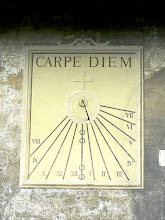SAIGO TAKAMORI true life (Part I)



PHOTOS:
* Battle of Shiruyama, the Last
Samurai's Stand.
* Saigo Takamori suicide's attempt.
* Book of Saigo Takamori's biography
___________________________________
THE LAST SAMURAI
o-o-o-o-o-o-o-o-
l827-1859, were Saigo Takamori's Early Years
Saigo started life as the eldest son of a samurai of Koshogumi rank. "Koshogumi" literally means "small name guard" and was the lowest rank of the "castle-town samurai."
These were not the sort of circumstances that would normally portend the stature he eventually gained.
His family lived in humble circumstances.
Saigo's father struggled to support a wife and seven children on what he earned as a Satsuma domain tax official in Kagoshima, the castle town of Satsuma domain,
--present day Kagoshima Prefecture--.
In 1843, at the age of 16, Saigo Takamori became a minor official in a rural tax office, a post he held for nine years. While there, Saigo submitted courageous petitions to the Satsuma domain government denouncing administrative corruption and proposing measures to alleviate peasant distress. It was perhaps these memos that brought him to the notice of the daimyo of Satsuma domain, Lord Shimazu Nariakira. In 1854, Saigo as one of several promising young men Lord Nariakira selected to do intelligence work, and other duties requiring discretion, in Edo, the capital now known as Tokyo.
Saigo was in the capital during one of the most eventful times in Japanese history. In 1853, Commodore Matthew Perry arrived with his four "Black Ships" and a letter from President Millard Fillmore, demanding that Japan open its ports to foreign trade.
At first rebuffed, Perry he returned one year later, this time steaming right into Yokohama harbor with seven ships, which Saigo saw firsthand, as he and the rest of Lord Nariakira's retinue made its way through Yokohama on their way to Edo.
Saigo continued to be given more responsibility by Lord Nariakira. In 1856, he entered the daimyo's inner circle of retainers, those involved in the most important issues of Satsuma domain affairs --a station far above his rank--.
In 1858, he was in Kyoto, sounding out the Imperial Court on a possible alliance to prevent the Tokugawa Shogunate from making anymore concessions to foreign pressure, using an activist Buddhist priest --an outspoken imperial loyalist named Gessho-- as a liasion between himself and the Imperial Court.
Suddenly, back in Satsuma, Lord Nariakira took ill. A few days later, he was dead.
Lord Nariakira's death shocked the country --it was widely suspected that he had been poisoned--.
A comtemporary, a Dr. Pompe van Meerdervoort who was affiliated with the Dutch navy in Nagasaki, had this to say:
(Lord Nariakira was) "...possibly the most important person in the country; because of his influence on the Emperor and his government, and also because of his own power and erudition, he was regarded as the reformer of Japan...it is not improbable that he was poisoned."
With Lord Nariakira out of the way, the Tokugawa government, led by Regent Ii Naosuke, launched a crackdown on anti-Shogunal activity known as the Ansei purge.
Arrest warrants were issued on anyone suspected of anti-shogunal sympathies.
This included Saigo Takamori, who had been associating with imperial loyalists who were hostile to the Tokugawa Shogunate.
With the death of the daimyo, Saigo was determined to commit Junshi, that is kill himself in order to join his lord in death.
He was dissuaded from this by Gessho. The pro-imperial activist Buddhist priest also wanted by the shogunal authorities.
Saigo promised Gessho's contact in the imperial court, Konoe Tadahiro, that he would protect Gessho, and so the two of them traveled to Kagoshima in Satsuma, in the hopes of being granted asylum.
But Shimazu Hisamitsu --the brother of Nariakira who had been made regent in light of the former's death-- refused to protect Gessho from the shogunal agents who were already in Satsuma, searching for Gessho and Saigo both.
Unable to fulfill his promise to protect Gessho, Saigo proposed a suicide pact, and the two of them threw themselves into the icy winter waters of Kinko Bay. They were pulled from the waters by the men manning the skiff they'd been crossing the bay on. Saigo survived his near drowning, but Gessho could not be revived.
Satsuma officials reported to the Tokugawa authorities that Gessho and Saigo had both drowned.
They produced Gessho's corpse as evidence and claimed that Saigo's body had not been recovered.
To conceal the fact that he had survived, Saigo was exiled to the island of Amami Oshima, in southern Satsuma.
He lived there under an assumed name from 1859 to 1862.
( TO BE CONTINUED .......... )
==============================


0 Comments:
Post a Comment
<< Home